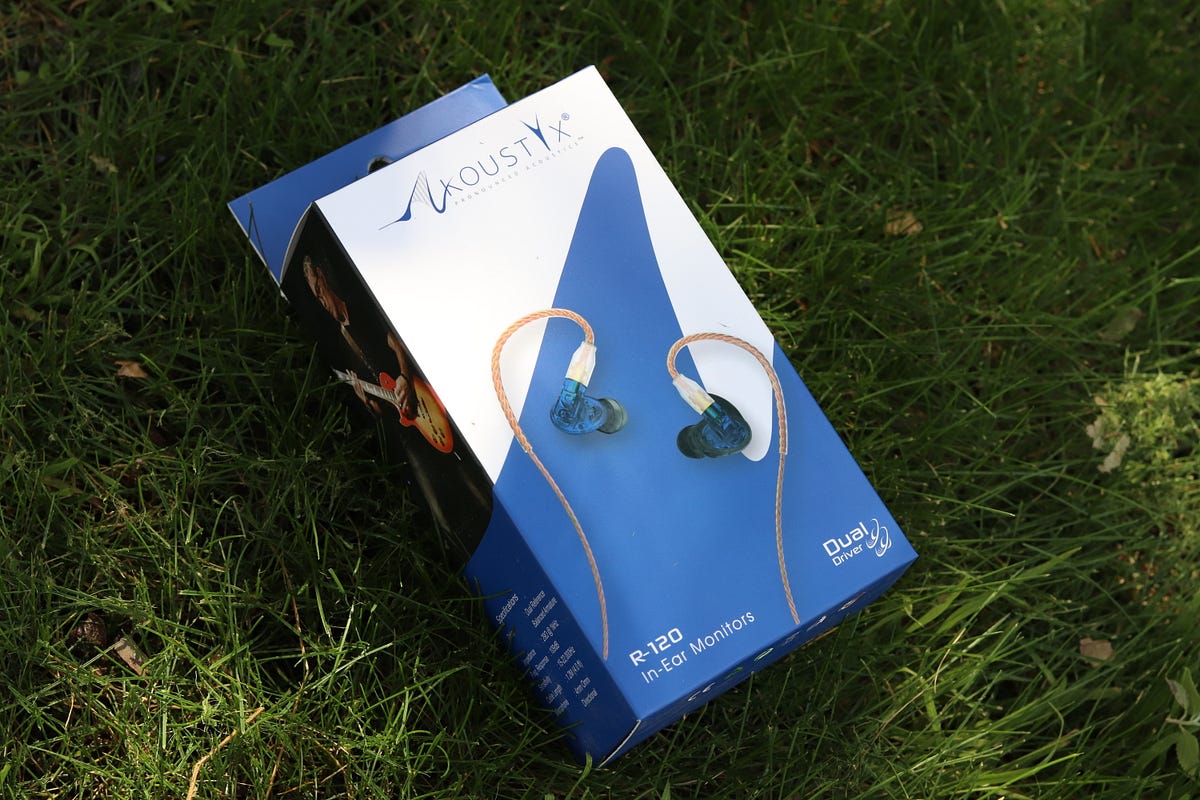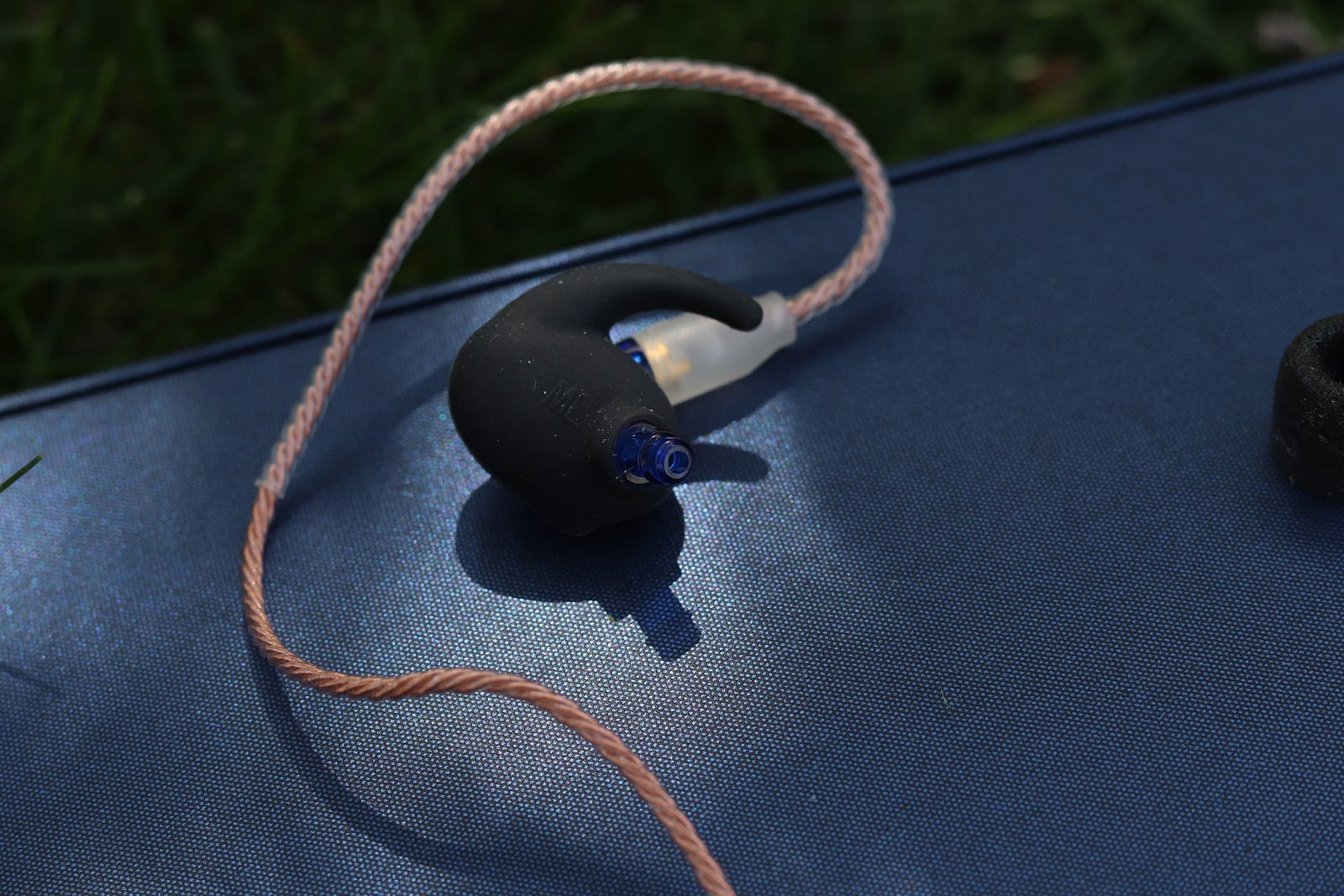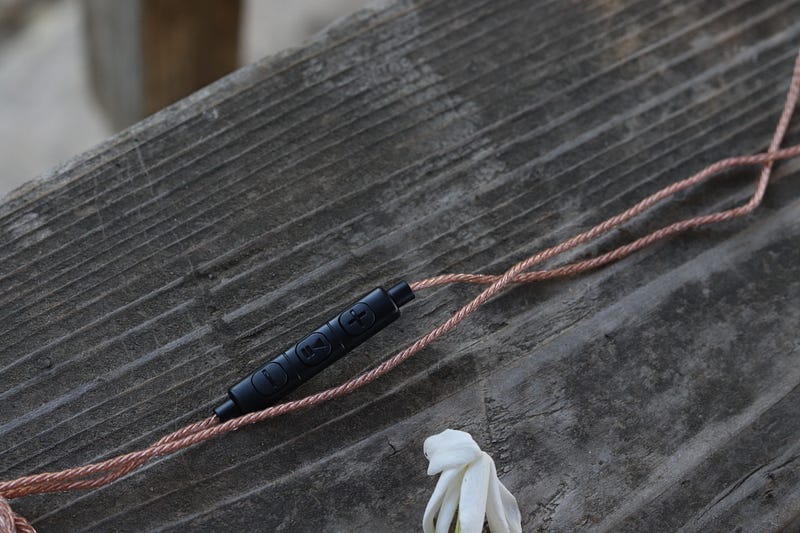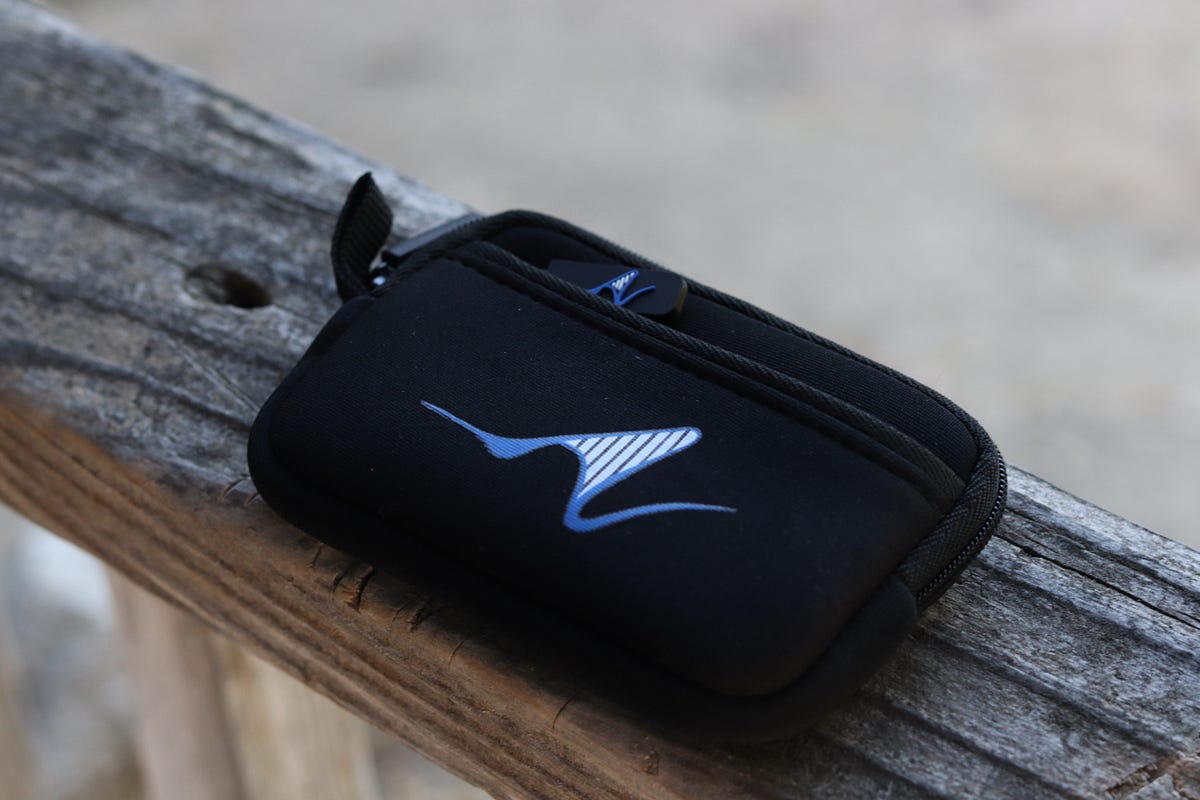Link to my review and measurement index thread where one can also find a full review overview, more information about myself as well as my general-ish audio and review manifesto: https://www.head-fi.org/threads/956208/
I only give full stars. My ranking/scoring system does not necessarily follow the norm and is about as follows:
5 stars: The product is very good and received the "highly recommended" award from me.
4 stars: The product is very good and received the "recommended" award from me.
3 stars: The product is good/very good, but not outstanding/special enough to get any of my two awards. ["Thumbs Up"]
2 stars: The product is only about average or even somewhat below that and somewhat flawed/flawed in some areas. [neither "Thumbs Up" nor "Thumbs Down"]
1 star: The product is bad/severely flawed to outright bad. ["Thumbs Down"]
Akoustyx R-120
Source:
Review sample.
Miscellaneous:
The unboxing experience is generally nice with a well-designed, compact package that contains the in-ears, several differently sized silicone ear tips of high quality, some Comply foam ear tips, three pairs of differently sized ear hooks (called “Freebit ear interface”) that can be put on the in-ear shells, one pair of silicone covers that can be put on the shells, and a nice carrying case made of neoprene.
I like the shells’ dark blue colour and that they are translucent.
While it’s generally good that the shell design is unique, I don’t particularly find it the most attractive. Less attractive without any “Freebit ear interfaces” or silicone covers installed, so I have the silicone covers installed on the shells all the time.
I like how and where the MMCX sockets are located.
Perceived value/build quality of the shells is on the lower end – the blue plastic seems to be rather thin; my Shure SE425s’ and Knowledge Zenith AS06s’ shells definitely appear thicker and more premium to me.
Excellent fit and comfort.
High quality cable; removable with MMCX connectors. Supple and flexible thanks to twisted conductors. Looks and feels premium.
Nice three-button remote control, located on the left hand side.
A chin-slider is present.
Two Balanced Armature drivers per side; single-bore nozzle.

Sound:
Largest included single-flange silicone ear tips.
Silicone covers installed on the shells (not that it would really make any difference, though).
Tonality:
Flat-neutral leaning more towards to bright-/lean-neutral; mostly diffuse-field oriented.
The tonality is somewhere in-between my Etymotic ER-4S, the ER3SE, the ER2SE, my Ultimate Ears Reference Monitors and the diffuse-field target.
The lows that are generally flat neutral extend flat and linearly into the real sub-bass (no roll-off) and are generally elevated by ca. 1.5 dB compared to my Etymotic ER-4S that are absolutely flat and lifeless in the bass, which makes the R-120s’ minimal bass elevation appear quite similar to that of the Etymotic ER3SE and ER2SE in quantity, with the exception that the Akoustyx’ minimal elevation extends a little further towards the midrange wherefore they have got slightly more warmth in the upper fundamental range and lower midrange in comparison to Etymotic’s SE models.
The midrange is generally flat, neutral and highly realistic sounding without any real tendency towards warmth or brightness, while the presence range around 2 kHz is slightly relaxed compared to the central midrange at 1 kHz wherefore the R-120 are a bit less “brutal” and direct with imperfections on the track compared to the ER4SR and my ER-4S and more comparable to the ER3SE in this area, and still more direct here than my Ultimate Ears Reference Monitors.
Going up in the treble, Akoustyx’ dual-BA in-ears deviate somewhat more from the more Etymotic (ER3SE) target oriented signature that they closely follow below, and are closer to the diffuse-field target compared to the Etymotic (ER-4S, ER4SR) target (that is basically a slightly milder approach to the rawer diffuse-field target), which makes them sound rawer, more direct, but also brighter in the upper middle and upper highs.
Listening to sine sweeps, the area between 4 kHz and 10 kHz, especially in the middle around 7 kHz, is on the brighter side to my ears and sounds brighter than the central midrange at 1 kHz to me. Compared to my Etymotic ER-4S and the ER4SR, the output from the R-120 is about 3 respectively 4 dB stronger around 7 kHz, and around 2 dB below and above that (there are no audible peaks in these areas, they are just generally and broadly elevated to my ears); around 10 kHz and above, the R-120 are also somewhat brighter than what my ears perceive as flat when listening to sine sweeps, which leads to a somewhat metallic upper treble timbre.
Extension past 10 kHz is really good.
Listening to music, the R-120 sound generally mostly neutral and realistic to me, but also somewhat (sometimes a bit too) bright and metallic all of the time compared to what I perceive as flat when performing sine sweeps or listening to noise signals.
Often the treble timbre appears mostly realistic, but sometimes it doesn’t fully and comes across as somewhat too bright, tending towards being rather metallic and a bit screechy with high notes; anyway, it’s a treble presentation that’s definitely raw, merciless and direct, although on the edge of becoming a bit too bright and a bit too metallic due to the bass being clearly on the flat-neutral side of tuning, wherefore there is no warmth that could act as a bit of counterweight.
This, along with listening to sine sweeps that tells me the same, and demonstrates that the comparatively milder Etymotic target response (that is basically a somewhat modified diffuse-field response) sounds flatter and more correct to me in the highs with music, sine sweeps, noise signals and audio material that contains spoken words/dialogues, compared to the slightly brighter approach that Akoustyx went for – even if the difference in the upper middle and upper treble is only minimal (just few dB), the R-120 are tuned just a bit too bright in the area around 7 kHz to sound correct to me.
Frequency Response:

ER-4S-Compensation

ProPhile 8-Compensation
Resolution:
Generally decent to good resolution, but not among the best in this price range.
Subjectively at least one step or two below Etymotic’s comparably priced Balanced Armature and dynamic driver models from the ER2 and ER3 series when it comes to separation, cleanliness and control in busy parts of the music as well as revealing micro details.
Bass slightly on the softer side for BA drivers, which creates the perception of just a little extra body. Not slow or soft at all thanks to the flat tuning.
Good bass control; doesn’t really show any signs of strain even when fast and complex bass lines are on the music files.
Fairly good speech intelligibility.
Treble separation is mostly clean but starts to show a bit of haze and some loss of control in fast, busy and dense parts of the music.
Due to the slightly brighter tuning, the R-120 come across as more “revealing” in the highs than Etymotic’s single-BA models, but comparing them side by side shows that actual details and separation are somewhat higher on the Ety models.
Soundstage:
The soundstage presentation is somewhat wider than deep to my ears wherefore the perceived shape is a bit more oval than circular; it sounds natural, realistic and three-dimensional to me.
In terms of size, the R-120s’ stage is neither the smallest nor the largest but sounds more or less “average” in size and believable.
In terms of imaging, the R-120 do a good job and provide clean instrument separation and localisation.
Their stage remains intact and precise but cannot fully keep the same level of control when the scenario becomes fast, dense and busy.

Conclusion:
Comfortably fitting in-ears with a rarely found, largely flat- to rather bright-neutral sound signature that is mostly oriented towards the diffuse-field target, but ultimately just a bit too bright to sound fully correct. Decent technical performance but ultimately not fully Etymotic-level.
High quality cable; the only thing in terms of build quality/finish/perceived value that I would wish for are thicker-walled, more premium appearing plastic shells.
I only give full stars. My ranking/scoring system does not necessarily follow the norm and is about as follows:
5 stars: The product is very good and received the "highly recommended" award from me.
4 stars: The product is very good and received the "recommended" award from me.
3 stars: The product is good/very good, but not outstanding/special enough to get any of my two awards. ["Thumbs Up"]
2 stars: The product is only about average or even somewhat below that and somewhat flawed/flawed in some areas. [neither "Thumbs Up" nor "Thumbs Down"]
1 star: The product is bad/severely flawed to outright bad. ["Thumbs Down"]
Akoustyx R-120
Source:
Review sample.
Miscellaneous:
The unboxing experience is generally nice with a well-designed, compact package that contains the in-ears, several differently sized silicone ear tips of high quality, some Comply foam ear tips, three pairs of differently sized ear hooks (called “Freebit ear interface”) that can be put on the in-ear shells, one pair of silicone covers that can be put on the shells, and a nice carrying case made of neoprene.
I like the shells’ dark blue colour and that they are translucent.
While it’s generally good that the shell design is unique, I don’t particularly find it the most attractive. Less attractive without any “Freebit ear interfaces” or silicone covers installed, so I have the silicone covers installed on the shells all the time.
I like how and where the MMCX sockets are located.
Perceived value/build quality of the shells is on the lower end – the blue plastic seems to be rather thin; my Shure SE425s’ and Knowledge Zenith AS06s’ shells definitely appear thicker and more premium to me.
Excellent fit and comfort.
High quality cable; removable with MMCX connectors. Supple and flexible thanks to twisted conductors. Looks and feels premium.
Nice three-button remote control, located on the left hand side.
A chin-slider is present.
Two Balanced Armature drivers per side; single-bore nozzle.
Sound:
Largest included single-flange silicone ear tips.
Silicone covers installed on the shells (not that it would really make any difference, though).
Tonality:
Flat-neutral leaning more towards to bright-/lean-neutral; mostly diffuse-field oriented.
The tonality is somewhere in-between my Etymotic ER-4S, the ER3SE, the ER2SE, my Ultimate Ears Reference Monitors and the diffuse-field target.
The lows that are generally flat neutral extend flat and linearly into the real sub-bass (no roll-off) and are generally elevated by ca. 1.5 dB compared to my Etymotic ER-4S that are absolutely flat and lifeless in the bass, which makes the R-120s’ minimal bass elevation appear quite similar to that of the Etymotic ER3SE and ER2SE in quantity, with the exception that the Akoustyx’ minimal elevation extends a little further towards the midrange wherefore they have got slightly more warmth in the upper fundamental range and lower midrange in comparison to Etymotic’s SE models.
The midrange is generally flat, neutral and highly realistic sounding without any real tendency towards warmth or brightness, while the presence range around 2 kHz is slightly relaxed compared to the central midrange at 1 kHz wherefore the R-120 are a bit less “brutal” and direct with imperfections on the track compared to the ER4SR and my ER-4S and more comparable to the ER3SE in this area, and still more direct here than my Ultimate Ears Reference Monitors.
Going up in the treble, Akoustyx’ dual-BA in-ears deviate somewhat more from the more Etymotic (ER3SE) target oriented signature that they closely follow below, and are closer to the diffuse-field target compared to the Etymotic (ER-4S, ER4SR) target (that is basically a slightly milder approach to the rawer diffuse-field target), which makes them sound rawer, more direct, but also brighter in the upper middle and upper highs.
Listening to sine sweeps, the area between 4 kHz and 10 kHz, especially in the middle around 7 kHz, is on the brighter side to my ears and sounds brighter than the central midrange at 1 kHz to me. Compared to my Etymotic ER-4S and the ER4SR, the output from the R-120 is about 3 respectively 4 dB stronger around 7 kHz, and around 2 dB below and above that (there are no audible peaks in these areas, they are just generally and broadly elevated to my ears); around 10 kHz and above, the R-120 are also somewhat brighter than what my ears perceive as flat when listening to sine sweeps, which leads to a somewhat metallic upper treble timbre.
Extension past 10 kHz is really good.
Listening to music, the R-120 sound generally mostly neutral and realistic to me, but also somewhat (sometimes a bit too) bright and metallic all of the time compared to what I perceive as flat when performing sine sweeps or listening to noise signals.
Often the treble timbre appears mostly realistic, but sometimes it doesn’t fully and comes across as somewhat too bright, tending towards being rather metallic and a bit screechy with high notes; anyway, it’s a treble presentation that’s definitely raw, merciless and direct, although on the edge of becoming a bit too bright and a bit too metallic due to the bass being clearly on the flat-neutral side of tuning, wherefore there is no warmth that could act as a bit of counterweight.
This, along with listening to sine sweeps that tells me the same, and demonstrates that the comparatively milder Etymotic target response (that is basically a somewhat modified diffuse-field response) sounds flatter and more correct to me in the highs with music, sine sweeps, noise signals and audio material that contains spoken words/dialogues, compared to the slightly brighter approach that Akoustyx went for – even if the difference in the upper middle and upper treble is only minimal (just few dB), the R-120 are tuned just a bit too bright in the area around 7 kHz to sound correct to me.
Frequency Response:
ER-4S-Compensation
ProPhile 8-Compensation
Resolution:
Generally decent to good resolution, but not among the best in this price range.
Subjectively at least one step or two below Etymotic’s comparably priced Balanced Armature and dynamic driver models from the ER2 and ER3 series when it comes to separation, cleanliness and control in busy parts of the music as well as revealing micro details.
Bass slightly on the softer side for BA drivers, which creates the perception of just a little extra body. Not slow or soft at all thanks to the flat tuning.
Good bass control; doesn’t really show any signs of strain even when fast and complex bass lines are on the music files.
Fairly good speech intelligibility.
Treble separation is mostly clean but starts to show a bit of haze and some loss of control in fast, busy and dense parts of the music.
Due to the slightly brighter tuning, the R-120 come across as more “revealing” in the highs than Etymotic’s single-BA models, but comparing them side by side shows that actual details and separation are somewhat higher on the Ety models.
Soundstage:
The soundstage presentation is somewhat wider than deep to my ears wherefore the perceived shape is a bit more oval than circular; it sounds natural, realistic and three-dimensional to me.
In terms of size, the R-120s’ stage is neither the smallest nor the largest but sounds more or less “average” in size and believable.
In terms of imaging, the R-120 do a good job and provide clean instrument separation and localisation.
Their stage remains intact and precise but cannot fully keep the same level of control when the scenario becomes fast, dense and busy.
Conclusion:
Comfortably fitting in-ears with a rarely found, largely flat- to rather bright-neutral sound signature that is mostly oriented towards the diffuse-field target, but ultimately just a bit too bright to sound fully correct. Decent technical performance but ultimately not fully Etymotic-level.
High quality cable; the only thing in terms of build quality/finish/perceived value that I would wish for are thicker-walled, more premium appearing plastic shells.











